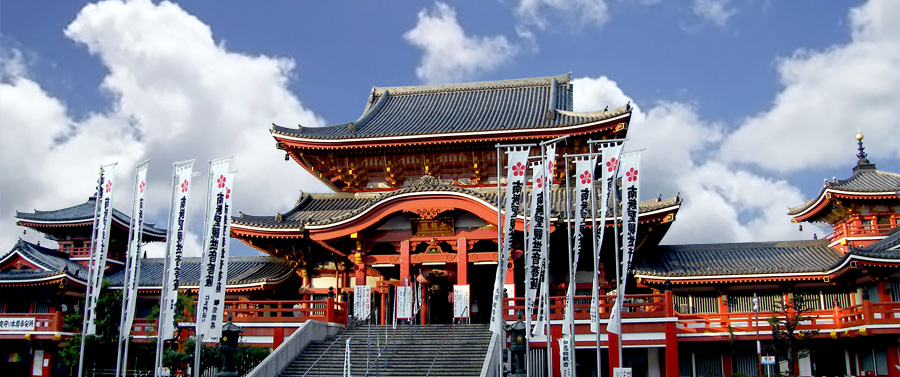Overview: A Spiritual Gem in the Heart of Nagoya
Osu Kannon Temple stands as one of Nagoya’s most captivating cultural landmarks, offering visitors a profound glimpse into Japan’s rich Buddhist heritage. Originally constructed during the Kamakura Period and relocated by Tokugawa Ieyasu in 1612, this temple is more than just a religious site—it’s a living museum of Japanese history and tradition.
Key Highlights at a Glance
- Location: Central Nagoya, Japan
- Founded: Kamakura Period (1192-1333)
- Relocated: 1612 by Tokugawa Ieyasu
- Unique Feature: Houses over 15,000 historic texts
- Admission: Free
- Access: Open 24 hours
Historical Significance: A Millennium of Cultural Heritage
The temple’s journey is as fascinating as its contents. Originally situated in Gifu Prefecture, Osu Kannon was repeatedly threatened by flooding before being carefully moved to its current location by the legendary shogun Tokugawa Ieyasu. Although the current structures are 20th-century reconstructions, they continue to echo centuries of spiritual and cultural importance.
Must-See Attractions
1. Wooden Kannon Statue
Carved by Kobo Daishi, a pivotal figure in Japanese Buddhism, the wooden statue of Kannon (the Goddess of Mercy) is the temple’s central object of worship. This exquisite sculpture represents not just artistic mastery but profound spiritual significance.
2. Shinpukuji Library
Beneath the main hall lies the Shinpukuji Library, a treasure trove of over 15,000 classic Japanese and Chinese texts. Its most prized possession is the oldest existing copy of the Kojiki, a chronicle detailing Japan’s mythological origins and early history.
3. Monthly Flea Market
On the 18th and 28th of each month, the temple grounds come alive with a charming flea market. Featuring around 60 stalls, visitors can browse an eclectic mix of souvenirs, antiques, clothing, and second-hand goods—a true local cultural experience.
4. Osu Shopping Arcade
Adjacent to the temple, the Osu Shopping Arcade rivals Tokyo’s Akihabara. With over 400 shops and restaurants, it’s a paradise for electronics enthusiasts, anime fans, and pop culture lovers, offering everything from cutting-edge gadgets to cosplay merchandise.
Best Time to Visit
- Recommended Seasons: Spring (March-May) and Autumn (September-November)
- Ideal Hours: 10:00 AM to 4:00 PM
- Pro Tip: Avoid market days if you prefer fewer crowds
Getting There
Subway Routes
- Nearest Station: Osu Kannon Station (Tsurumai Subway Line)
- From Nagoya Station:
- Take Higashiyama Subway Line
- Transfer at Fushimi Station to Tsurumai Line
- Travel time: Approximately 10 minutes
- One-way fare: 210 yen
Walking Routes
- 5-10 minute walk from Kamimaezu Station
- Easy access through the shopping arcade
Visitor Information
Hours and Admission
- Open: 24 hours daily
- Admission: Free
- Shopping Arcade Hours: Typically 11:00 AM – 7:00 PM
Practical Tips for Visitors
- Respect religious spaces—be mindful when taking photographs
- Dress modestly and appropriately
- Carry cash, as some small shops may not accept credit cards
- Allow ample time to explore the shopping arcade
- Download offline maps for easy navigation
- Comfortable walking shoes are recommended
Official Resources
- Temple Website: [Osu Kannon Temple Official Site]
- Shopping Arcade: [Osu Shopping Arcade Official Site]
Conclusion
Osu Kannon Temple is more than a destination—it’s a journey through time, connecting Japan’s profound spiritual traditions with its vibrant modern culture. Whether you’re a history buff, culture enthusiast, or curious traveler, this site promises an unforgettable experience that bridges centuries of Japanese heritage.

Leave a Reply